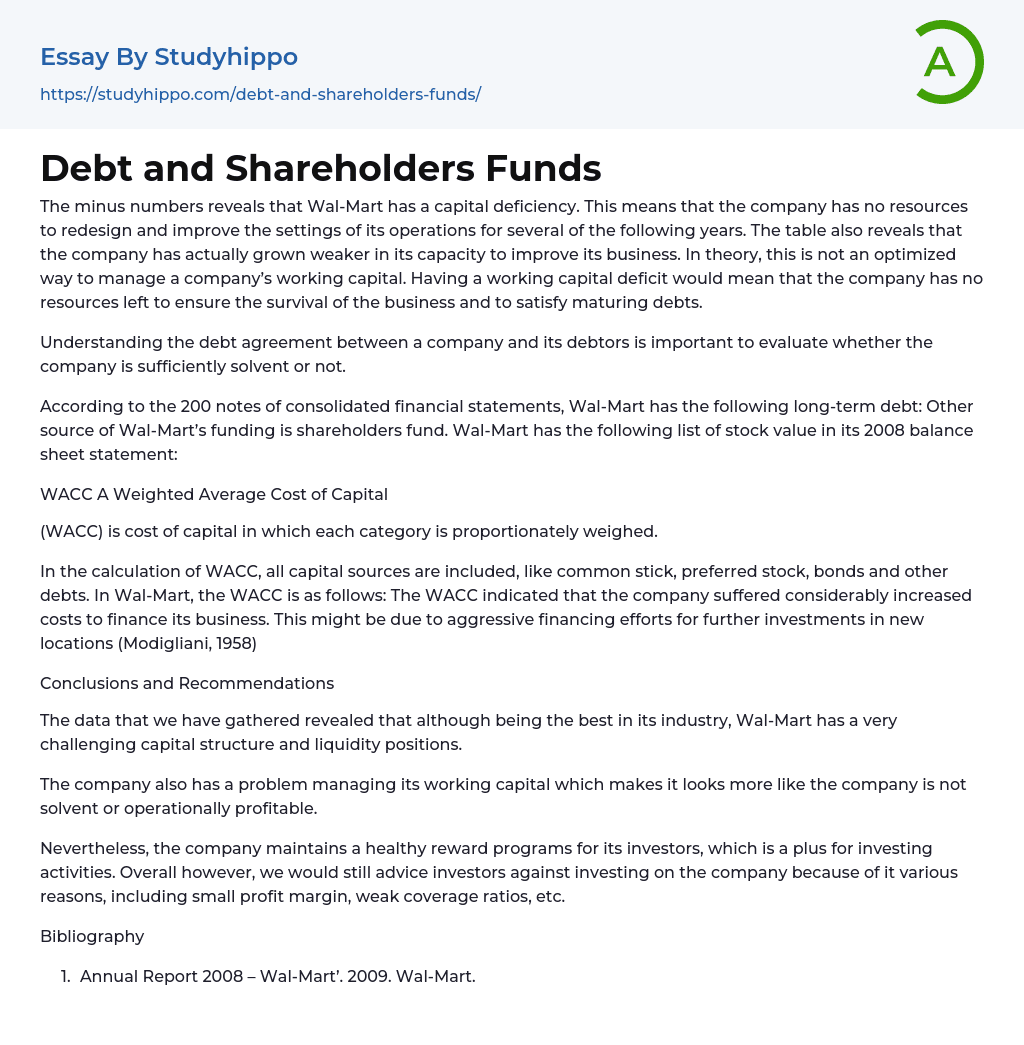The minus numbers reveals that Wal-Mart has a capital deficiency. This means that the company has no resources to redesign and improve the settings of its operations for several of the following years. The table also reveals that the company has actually grown weaker in its capacity to improve its business. In theory, this is not an optimized way to manage a company’s working capital. Having a working capital deficit would mean that the company has no resources left to ensure the survival of the business and to satisfy maturing debts.
Understanding the debt agreement between a company and its debtors is important to evaluate whether the company is sufficiently solvent or not.
According to the 200 notes of consolidated financial statements, Wal-Mart has the following long-term debt: Other source of Wal-Mart’s funding is shareholders fund. Wal-Mart has the following list of stock value
...in its 2008 balance sheet statement:
WACC A Weighted Average Cost of Capital
(WACC) is cost of capital in which each category is proportionately weighed.
In the calculation of WACC, all capital sources are included, like common stick, preferred stock, bonds and other debts. In Wal-Mart, the WACC is as follows: The WACC indicated that the company suffered considerably increased costs to finance its business. This might be due to aggressive financing efforts for further investments in new locations (Modigliani, 1958)
Conclusions and Recommendations
The data that we have gathered revealed that although being the best in its industry, Wal-Mart has a very challenging capital structure and liquidity positions.
The company also has a problem managing its working capital which makes it looks more like the company
is not solvent or operationally profitable.
Nevertheless, the company maintains a healthy reward programs for its investors, which is a plus for investing activities. Overall however, we would still advice investors against investing on the company because of it various reasons, including small profit margin, weak coverage ratios, etc.
Bibliography
- Annual Report 2008 – Wal-Mart’. 2009. Wal-Mart.
- Investing essays
- Asset essays
- Depreciation essays
- Discounted Cash Flow essays
- Foreign Direct Investment essays
- Funds essays
- Internal Rate Of Return essays
- Revenue essays
- Day Trading essays
- Futures Trading essays
- Capital market essays
- Million essays
- Payment essays
- Rate Of Return essays
- Funding essays
- Hedge Fund essays
- Bank essays
- Banking essays
- Corporate Finance essays
- Credit Card essays
- Currency essays
- Debt essays
- Donation essays
- Enron Scandal essays
- Equity essays
- Financial Accounting essays
- Financial Crisis essays
- Financial News essays
- Financial Ratios essays
- Financial Services essays
- Forecasting essays
- Foreign Exchange Market essays
- Free Market essays
- Gold essays
- Investment essays
- Legacy essays
- Loan essays
- Market Segmentation essays
- Money essays
- Personal finance essays
- Purchasing essays
- Retirement essays
- Shareholder essays
- Stock Market essays
- Supply And Demand essays
- Venture Capital essays




